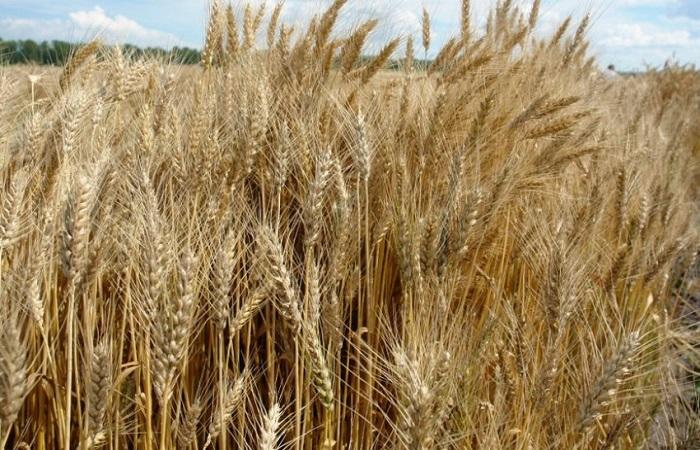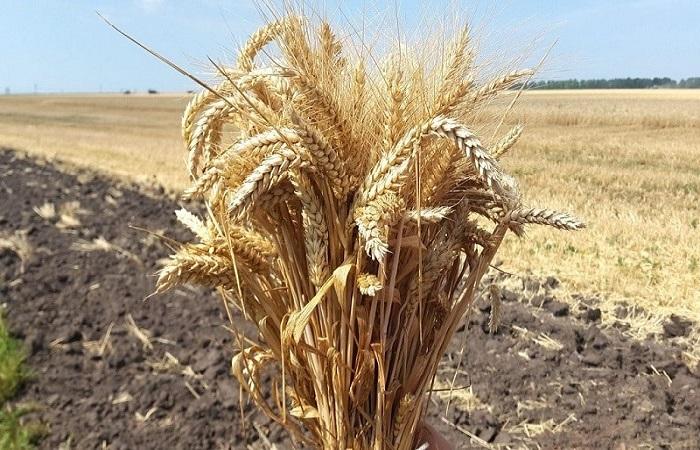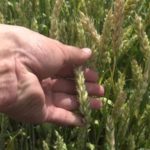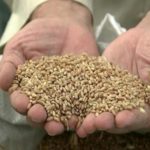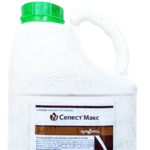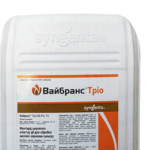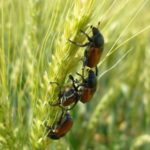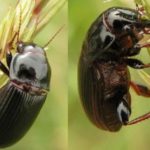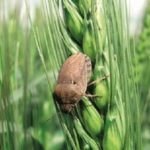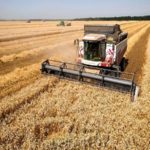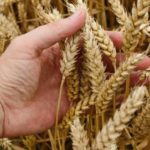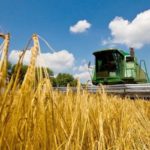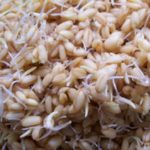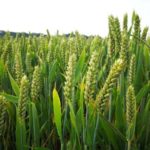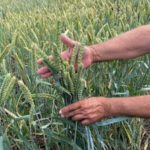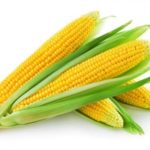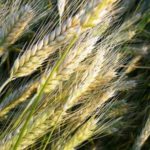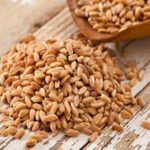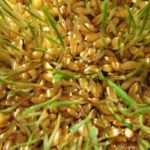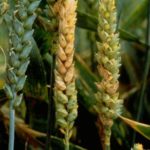Winter wheat varieties that are capable of producing record yields are valued in agriculture. Let's consider the characteristics of winter wheat variety Alekseevich, the history of selection, a description, what advantages and disadvantages the variety has. How to grow crops according to the rules, how to care for wheat. How to protect against diseases and pests. When to harvest and store crops.
History of selection
The Alekseevich variety is a new elite variety of valuable wheat, characterized by high yield. Mid-season variety, bred in 2014.breeders in the Krasnodar region specifically for cultivation in the Kuban and southern Russia.
Description and characteristics of wheat Alekseevich
This is a short-stemmed intensive variety that gives a maximum yield of 132.7 c/ha. Intended for cultivation in the Central Black Earth and North Caucasus regions.
The height of wheat plants is 77-96 cm, the variety is resistant to lodging, drought in the air and soil, and has high frost resistance. The sowing time is optimal for the region; wheat can be sown at a later date. In the Alekseevich variety, the growing season lasts 286-307 days. Weight of a thousand seeds is 37-46 g.
The maximum yield of the Alekseevich variety is 132 centners per hectare, the average is 40 centners per hectare, the grain retains excellent taste and nutritional qualities even when the wheat is grown on mineral fertilizers.
Advantages and disadvantages
Among the positive qualities of the variety are:
- resistance to lodging;
- resistance to brown rust, stem and yellow rust, powdery mildew, septoria.
Disadvantages of Alekseevich wheat: weak resistance to fusarium, susceptibility to smut.
Rules for growing crops
Good predecessors for Alekseevich wheat are perennial grasses, rapeseed, fallow areas, and peas. 5 million grains or 300-400 pieces are sown per hectare. per sq. m. Seeds must be treated before sowing, treatment with fungicides should be carried out during the growing season, 1-2 spraying is enough - preventative and in the initial stage of the disease.
In order for the seeds to fall correctly into the ground, the soil must have good density and structure and be leveled. Sowing depth is 3-5 cm. Wheat is sown in the usual row method with row spacing of 15 cm.After sowing, be sure to roll the seeds. The sowing time for this variety is September 10-20. By the beginning of cold weather, the plants should be 55-60 days old and have 2-4 developed sprouts.
How to care for the variety
Alekseevich wheat is fed with fertilizers, taking into account the composition of the soil and predecessors. Typically, 20-30 tons of organic matter are applied per hectare. Providing the soil with nutrients has a positive effect on resistance to cold, stimulates productivity, and reduces lodging.
If a crust appears on the field before germination, it must be broken up by harrowing. This destroys not only the compaction, but also the germinating weeds.
Diseases and pests
Wheat variety Alekseevich is not resistant to head smut and fusarium head blight. Signs of smut appear in the waxy ripeness phase of the grain. The lesion can be determined by the open spikelet membranes, from which the smut sac is visible. If you crush the affected spikelet, a grayish or sooty mass will remain on your hands.
Ears affected by smut are light, do not droop, and a grayish-violet tint is added to the usual color. The mass emits an unpleasant odor. During wheat harvesting, the smut is destroyed, the spores are sprayed and settle on the soil, stubble and threshed grain.
Infection with durum smut of Alekseevich wheat occurs during the germination of the grain.Plants are protected with drugs: “Maxim”, “Integral”, “Celest Max”, “Vibrance Trio”, “Maxim Forte”.
Fusarium head blight is manifested by early yellowing of individual spikelets, and then the yellowing spreads to sections of the spikelet. In such areas, an orange coating appears, which contains spores. Plants become infected during the flowering period under favorable conditions for infection - at a temperature of 12-18 ° C and rainy weather.
The source of Fusarium infection of the Alekseevich variety is undecomposed plant remains of cereal grasses, grains and corn.
It is necessary to combat the disease by observing crop rotation, treating seeds with fungicidal preparations “Select Max”, “Vibrans Integral”, “Maxim Forte”, “Amistar Trio”, “Menara”, “Magnello”, “Maxim”.
Harvesting and storage
Harvesting work can begin when the grain has reached full ripeness and its moisture content is no more than 20%. It is advisable to harvest Alekseevich’s wheat in 3-4 days, because the grain will begin to crumble. Up to 40-60% of the crop can crumble.
The harvesting method depends on the degree of ripeness of the cereal, the weather, the degree of weed infestation and the availability of equipment. Direct combining is used if the ears ripen evenly and the crops are almost free of weeds. This is a standard method that is used when grain moisture content is up to 15%. Dry grain allows you to carry out 3 operations at once: mowing, threshing and sifting.
When Alekseevich wheat is heavily infested with weeds, when cereals are thickened and when the ripening of ears is uneven, grain harvesting is carried out using a separate method. Mowing is carried out in the waxy ripeness phase, when grain moisture reaches 30-35%. The separate method improves the baking qualities of grain and its beneficial properties.
Advantages of the separate harvesting method: grain with high baking qualities, almost no crumbled grain, you can start harvesting earlier than usual. At the same time, there is a dependence on the weather, the need to use different types of equipment, and the cost of the harvest increases.
The new Alekseevich wheat variety has been cultivated for only a few years, but it has potential, which is why the variety will undoubtedly be in demand. It turned out to be productive, resistant to lodging and major fungal diseases. Recommended for cultivation in the Krasnodar Territory and southern Russian regions.

